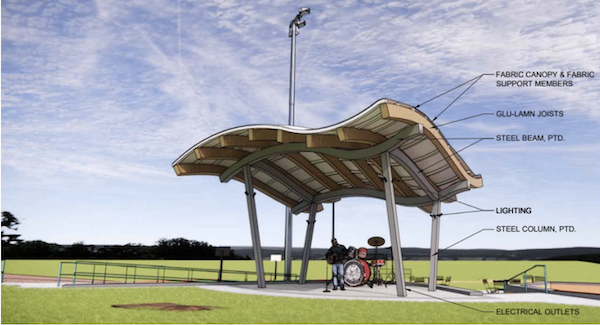
Courtesy of the City of Watertown The pavilion that will be built at Saltonstall Park.
The City Council approved funding for an ecological study at Walker Pond, building a pavilion at Saltonstall Park, and to help repair Watertown’s oldest home. They rejected a proposal to restore a historic memorial at Mount Auburn Cemetery.
The four projects were brought forward as recommendations from the Community Preservation Committee to be paid for using money from the Community Preservation Act funds. The dollars in the fund come from a local property tax surcharge and state matching funds, and can be used on historic preservation, open space/recreation, and affordable housing.
Saltonstall Park
The largest amount of money, $2.01 million, went toward the rehabilitation of upper Saltonstall Park (the area closest to Main Street), including adding a permanent covered performance structure. Other improvements include realigning the path through the park, landscaping under the tree canopy, and putting new benches and lights along the edge of the park along the street.
The pavilion will be in the space where a stage has been erected in previous years for the Watertown Summer Concerts, the Faire on the Square and other events. It will have a wavy shaped roof made with translucent covering. A concrete stage will be built underneath.
Councilor Lisa Feltner asked whether there would be lighting installed on the pavilion. Assistant City Manager Steve Magoon said there would be some lighting for security reasons, such as preventing the structure from being vandalized. There will not be permanent lighting for performances, he said, but there will be “plenty of power for that.” Sound equipment can also be plugged into the outlets.
Courtesy of the City of Watertown
Designs to make changes to Saltonstall Park include a realigned path, the pavilion for concerts and other events, and plantings and benches.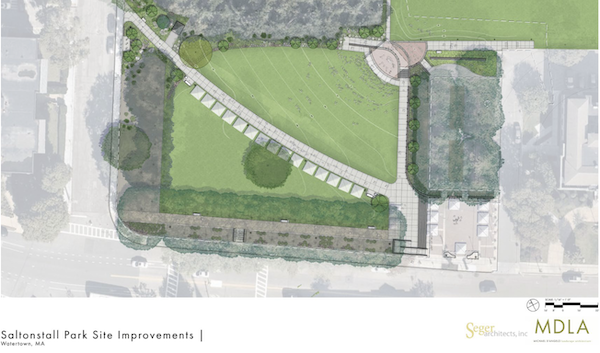
Magoon added that the plan is, in most cases, to have performers bring their own sound and/or lighting equipment. The City will also have equipment to rent.
The pavilion is also designed to have a screen hung up to show movies. Magoon said he is not sure if the screen would be left there permanently.
The Council approved the funding for the Saltonstall Park project 9-0.
Mount Auburn Cemetery
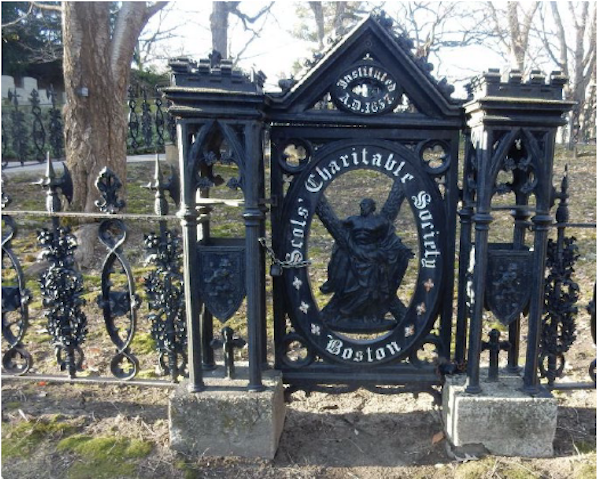
The Community Preservation Committee also received a request for funds to rehabilitate the Scots Charitable Society plot. The cast-iron fence around the area memorializes 200 Scottish immigrants of modest means and has no headstones or markers. It is one of the few remaining cast-iron fences.
The original request from Friends of Mount Auburn Cemetery asked for $300,000 in CPA funds to help restore the cast-iron fence, and replace the granite bases. The CPC reduced the amount to $200,000 and the Friends of Mount Auburn Cemetery would cover the $582,700 remaining in the project cost.
Councilor John Airasian said he had some concerns about the project, which got a 7-2 vote to recommend by the CPC.
“I went back and watched the meeting and there was a lot of concern, not just from the Committee but from members of the public,” Airasian said. “I understand (the Committee) asked for the $300,000 to move down to $200,000 and put conditions in there as well, but I was struck by some of the words describing the presentation from Mount Auburn Cemetery: confusing, dismissive, presumptive, backwards, disorganized.”
Multiple Councilors noted that while the majority of the Cemetery is in Watertown, it orients more toward Cambridge.
“My concern is, did they put a CPA application in to Cambridge?” Feltner said. “I didn’t see any matching funds from the City of Cambridge”
Councilor John Gannon said that roughly 98 percent of the 175 acres of Mount Auburn Cemetery property is in Watertown.
“For them to have a Cambridge address and not a Watertown address always struck me as odd,” Gannon said. “I saw this more as a regional CPA approach than all of Watertown funding it.”
Council President Mark Sideris added that the cemetery recently sold a plot of land to Buckingham Browne & Nichols School, on which athletic fields have been built.
“Having this much of this parcel in Watertown, there is nothing really they do for us,” Sideris said. “Recently they sold a piece of property for north of $40 million. Where is the $40 million? I would think their endowment is sufficient to cover this sort of thing. Unless they come to me and say the City of Cambridge is contributing, I am not using Watertown taxpayer money, tonight, on this particular project knowing they have $40 million from BB&N.”
The Council voted 8-1 against approving the funds for the Mount Auburn Cemetery project, with Tony Palomba supporting it.
Walker Pond
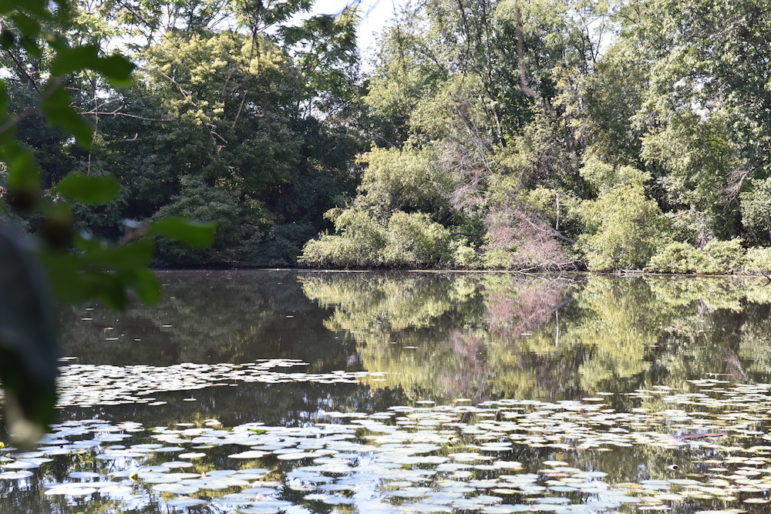
Leo Martin Community Preservation Act funds will be used to do a study of Walker Pond and come up with a plan to open the pond and land around it for recreational use.
The City purchased the 6.67-acre parcel that includes Walker Pond for $11.25 million in January 2023, and the Department of Community Development and Planning requested $145,000 in CPA funds to develop a final conceptual design plan for the property.
The land had been owned by Raytheon and there are some areas where the Department of Environmental Protection (DEP) has limited the allowed activity due to hazardous materials on the property. A Licensed Site Professional will be hired to make sure the changes to the pond and surrounding land will not disturb soils related to the wetland and pond area as the property has an Activity and Use Limitation (AUL) imposed by the DEP.
An ecological study will be conducted by Normandeau Associates to study the water quality, do a tree inventory, survey wildlife, and recommend steps to improve pond health, ecological function, and wildlife habitat. The money will also pay for a survey of the land, utilities and property boundaries.
After the surveys have been completed, the City will hold a community meeting to get input on two to three conceptual designs for the property, and then will create a final conceptual design plan with a cost estimate.
Councilor Nicole Gardner asked when the public would be able to use the recently acquired open space. Magoon said the study will not be able to start until the spring of 2025, and work could be done during the later part of the 2025 construction season. That would likely mean the park would be open for recreational use in 2026.
Gardner asked why the planning for the park and the survey couldn’t happen at the same time. Mark Kraczkiewicz, Chair of the Community Preservation Committee said the study may raise more questions.
“Walker Pond is an ecological place, it is a pond. We want to make sure we understand how the pond functions, what its wildlife functions are before we start to design a park around it,” he said. “We will address concerns around wildlife and the health of the pond before we begin to think about how to make that a park.”
Councilor John Gannon said he wants to make sure the park is safe for public use.
“I spoke with folks from Raytheon who worked there and had concerns about hazardous waste, uses, and the like,” Gannon said. “Are we going to look beyond the AUL limitation for the site and look at the entire site, look at test borings, and such, for the safety of folks who use the site? I want to wait until it is done to the satisfaction of the professionals instead of getting the park out and open quickly.”
Magoon said the Licensed Site Professional will be studying the site and making recommendations to make sure the park is safe.
The Council voted 9-0 to approve funding for the Walker Pond conceptual design plan.
Browne House
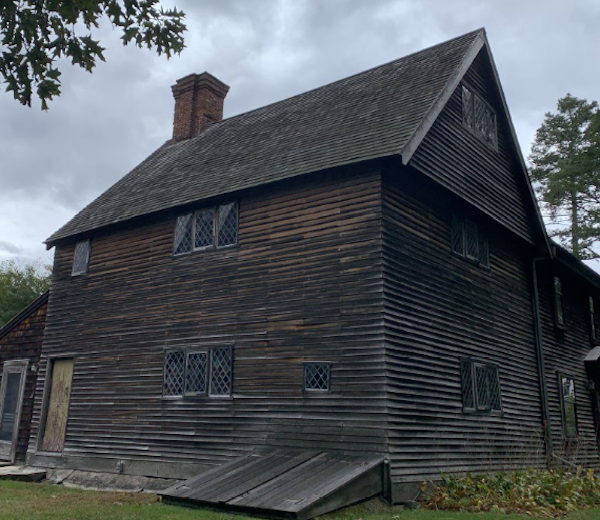
Historic New England requested $7,245 to come up with a plan to fix a cracked beam at the Browne House. The home that sits next to the Watertown Police Station dates back to 1698. It is the oldest remaining house in Watertown and is listed on the National and State Register of Historic Places.
The other half of the funds for the project will be provided by Historic New England. The firm of Simpson Gumpertz & Heger, which specialized in issues of structural integrity, will be hired to assess three alternative repair solutions.
Feltner said she was excited to see the project come forward because “we have so few preserved historic properties in Watertown.”
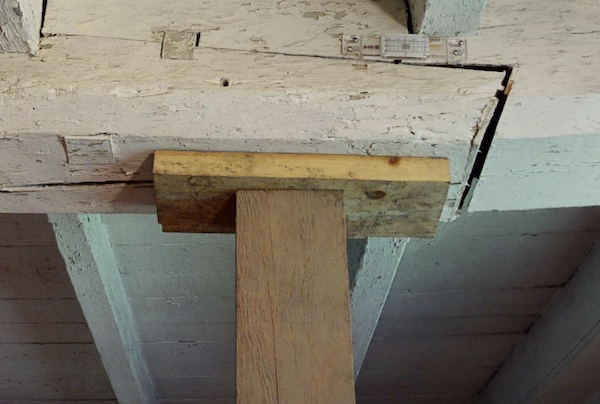
Gardner asked if Historic New England would be back to ask for more CPA funds to do repairs at the house.
“Historic New England has been very straightforward with their needs,” Kraczkiewicz said. “They gave their position that the Brown House needs a lot of work: re-siding, some painting, and other work. We indicated they could come forward to us, and we can look at that. We can do each one on a case-by-case basis.”
The Council voted 9-0 to approve the funds for the study to come up with a plan to repair the beam at the Browne House.
See more details about the projects in the Community Preservation Committee’s report by clicking here.
Wait, $7,245 just to come up with a plan to fix a cracked beam? Not to fix the beam but just for someone to look at it and say what it needs?
This is astonishingly expensive for a simple idea and not an actual solution.
Where do people get these numbers? Is it all just make believe?